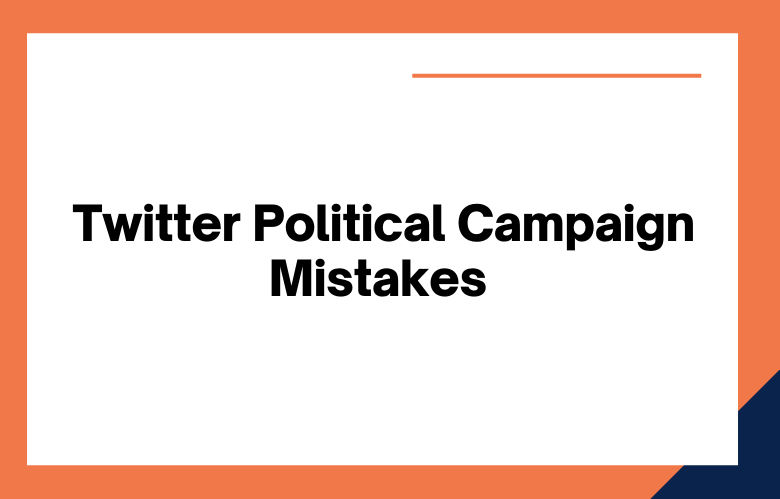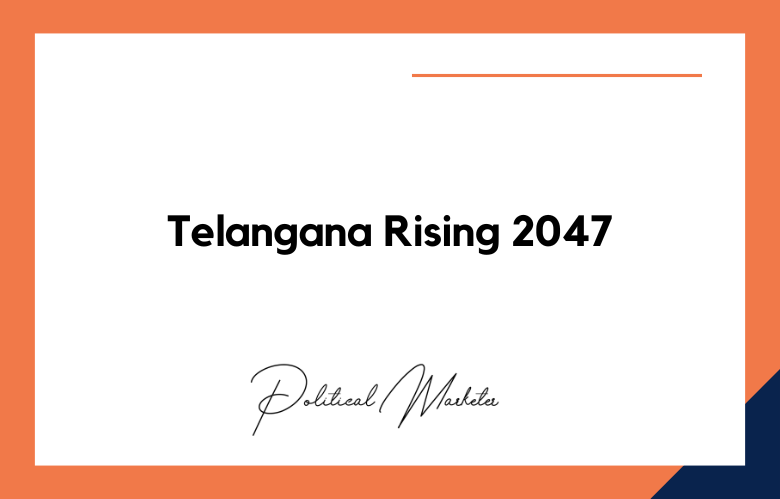Twitter is the most potent tool political campaigns can use to get their message out, connect with voters, and raise money. However, many campaigns make common mistakes that can hurt their chances of winning. Here are four common Twitter mistakes political campaigns should avoid.
However, many political campaigns make common mistakes that can hurt their chances of winning. We’ll discuss some of the most common Twitter mistakes political campaigns make and how to avoid them.
Common Mistakes Political Campaigns Make on Twitter
- Failing to use Twitter as a listening tool
- Automating tweets without taking into account the individual campaign’s voice
- We are not using Twitter to engage with potential voters.
- Posting irrelevant content that does not appeal to the target audience
- Neglecting to respond to people who reach out to the campaign on Twitter
- Tweeting too much or too little
- Not setting up Twitter goals and objectives
- Not using Twitter to its full potential
- Failing to engage with followers
- Posting too much or not enough content
- Tweeting without a strategy
- Not using hashtags correctly
- Ignoring customer service requests on Twitter
- Automating tweets without taking into account the individual campaign’s voice
- Not monitoring Twitter analytics
- Failing to tweet regularly
- Not using hashtags correctly
- Tweeting about themselves instead of their policies or stances
- Ignoring customer complaints and feedback
- Automating tweets without taking the time to personalize them
- Tweeting too much or too little
- Focusing on negative campaigning instead of talking about what they stand for
- Posting unprofessional or irrelevant images
- Not using Twitter to its full potential
- Failing to engage with followers
- Posting too often (or not enough)
- Tweeting about mundane topics
- Not using hashtags correctly
- Automating tweets
- Ignoring negative feedback
- Failing to use Twitter for outreach and engagement
- Automating tweets without taking the time to personalize them
- Not using Twitter to respond to criticism
- Tweeting too much or too little
- Neglecting to use hashtags
- Focusing on promoting their content instead of engaging with others
- Relying on bots rather than human interaction
- Posting inflammatory or offensive content
- Failing to engage with followers
- Tweeting without a plan
- Ignoring negative feedback
- Automating tweets without taking the time to personalize them
- Not using hashtags correctly
- Not using images or videos
- Not using Twitter for outreach
- Failing to use hashtags effectively
- Automating tweets instead of engaging with followers
- Tweeting the same thing multiple times
- Ignoring negative feedback
- Posting too much or too little content
- Not responding to direct messages
- Not taking advantage of Twitter’s features
- Not using hashtags correctly
- Automating tweets without taking the time to personalize them
- Tweeting too much or too little
- Failing to respond to mentions and messages
- Not using images and videos
- Ignoring Twitter analytics
- Failing to engage with followers
- Posting too much or not enough content
- Tweeting about personal matters instead of campaign goals
- Not monitoring Twitter analytics
- Automating tweets without taking follower preferences into account
- Ignoring negative feedback
- Tweeting without a plan
- Failing to use Twitter for outreach
- Not using hashtags correctly
- Automating tweets without personalizing them
- Missing customer service on Twitter
- Not monitoring mentions and replies
- Posting too much or too little content
- Tweeting about controversial topics
- Not targeting the right audience
- Focusing on vanity metrics instead of engagement or conversions
- Neglecting to use Twitter’s ad-targeting options
- Not using enough visuals in their ads
- Not testing different versions of their ads
- Running the same ads for too long
- Not tracking results
- Focusing on the wrong metrics
- Neglecting to use Twitter Ads features
- Targeting too narrowly
- Not using creative content
- Ignoring negative feedback
- Failing to optimize campaigns
- Concentrate on selling instead of engaging with followers
- Posting too often or not often enough
- Not using Twitter Ads to their full potential
- Neglecting to use images or videos in ads
- Creating ads that are too long or too short
- Not testing different versions of ads
- Ignoring negative feedback
- Focusing on vanity metrics instead of engagement
- Not using Twitter Ads to their full potential
- Targeting the wrong keywords
- Neglecting to use ad extensions
- Not testing different creatives
- Failing to measure results
- Focusing on vanity metrics instead of engagement
- Not using Twitter Ads Manager
- Targeting people who are not likely to vote
- Neglecting to use ad creative that stands out
- I am not testing different audiences and ads.
- Focusing on vanity metrics instead of engagement
- Not using Twitter Ads Manager
- Targeting too broadly
- Not testing different types of ads
- Neglecting to use hashtags
- Relying on automation alone
- Posting low-quality content
- Focusing on vanity metrics rather than engagement
- Failing to use Twitter Ads Manager
- Not using enough images or videos
- Not testing different ad variations
- Not using call-to-action buttons
- Targeting the wrong countries
- Not setting a budget
- Not using Twitter Ads to their full potential
- Targeting people who are not likely to vote
- Neglecting to use creative content in ads
- Not testing different types of ads
Conclusion
Political campaigns often have a presence on Twitter to promote their candidate, but they make some common mistakes. We’ve compiled them for you here so that your campaign can avoid these pitfalls and continue to be successful with social media marketing. Did any of the following happen in your political campaign? If so, it may be time to change up your strategy! Contact us if you need help implementing new systems or want someone on-hand who can execute an effective plan.
One way to get in touch is by filling out our online form on this site or give us a call at
+91 9848321284. Let’s work together today!
Common Mistakes Political Campaigns Make on Twitter: FAQs
Why Is It A Mistake For Political Campaigns To Ignore Twitter Altogether?
Twitter offers real-time engagement, media coverage, and trend participation essential for modern political campaigns.
What Happens When Political Campaigns Post Inconsistently On Twitter?
Inconsistent activity leads to lost momentum, decreased follower engagement, and missed opportunities to shape the narrative.
Is Using Automated Replies A Mistake On Twitter For Campaigns?
Yes, overly automated interactions can make the campaign seem robotic and out of touch, diminishing voter connection.
Why Is Neglecting To Respond To Mentions Or DMs A Problem?
Ignoring voter interactions shows a lack of responsiveness, which can weaken community support and campaign credibility.
How Do Campaigns Go Wrong By Not Monitoring Hashtags Properly?
Without hashtag monitoring, campaigns may miss critical conversations, emerging issues, or attacks requiring immediate response.
Why Is Overusing Hashtags A Common Mistake?
Excessive hashtag use makes tweets cluttered and unprofessional, and may reduce engagement instead of boosting it.
What Is The Risk Of Not Having A Verified Account For A Political Campaign?
Lack of verification can lead to impersonation risks and reduce trust in the legitimacy of the campaign’s communication.
Why Is It Bad To Delete Controversial Tweets Without Explanation?
Deleting tweets without clarification can appear evasive and provoke more backlash or media scrutiny.
What’s The Issue With Focusing Only On Promotional Tweets?
A one-way promotional approach fails to foster dialogue or trust, reducing the campaign’s effectiveness on social media.
Why Should Campaigns Avoid Posting Overly Complex Language On Twitter?
Complex phrasing can confuse voters and reduce tweet reach; simplicity and clarity are essential on this fast-paced platform.
Is It A Mistake To Not Use Visual Media In Tweets?
Yes, visuals like images and videos significantly increase visibility, engagement, and content shareability.
What Happens If Political Campaigns Ignore Negative Comments?
Unaddressed criticism can spiral into viral negativity and damage the campaign’s reputation.
Why Is Ignoring Twitter Analytics A Mistake?
Not reviewing analytics means missing key insights into follower behavior, best posting times, and tweet performance.
How Does Failing To Tailor Messages To Twitter’s Format Hurt Campaigns?
Recycling content from other platforms without optimizing for Twitter often results in low engagement and reduced clarity.
What Are The Dangers Of Engaging In Arguments Or Trolling?
Fighting or reacting to trolls can derail campaign messaging and harm public perception.
Why Is Not Pinning Strategic Tweets A Missed Opportunity?
Pinned tweets allow key messages to stay front and center, boosting visibility for campaign priorities.
What’s The Consequence Of Not Collaborating With Influencers Or Micro-Activists?
Missing influencer partnerships means losing out on extended reach, trust networks, and grassroots momentum.
How Does Poor Timing In Tweet Scheduling Affect Visibility?
Tweeting at low-activity times means your message may go unseen, reducing engagement and retweet potential.
Why Is Using Too Many Campaign Slogans In Every Tweet A Problem?
Repetitive slogans feel inauthentic and robotic, reducing impact and audience interest.
What’s The Impact Of Omitting CTAs In Political Tweets?
Audiences may not know how to engage without calls-to-action, limiting donations, shares, and volunteer signups.











